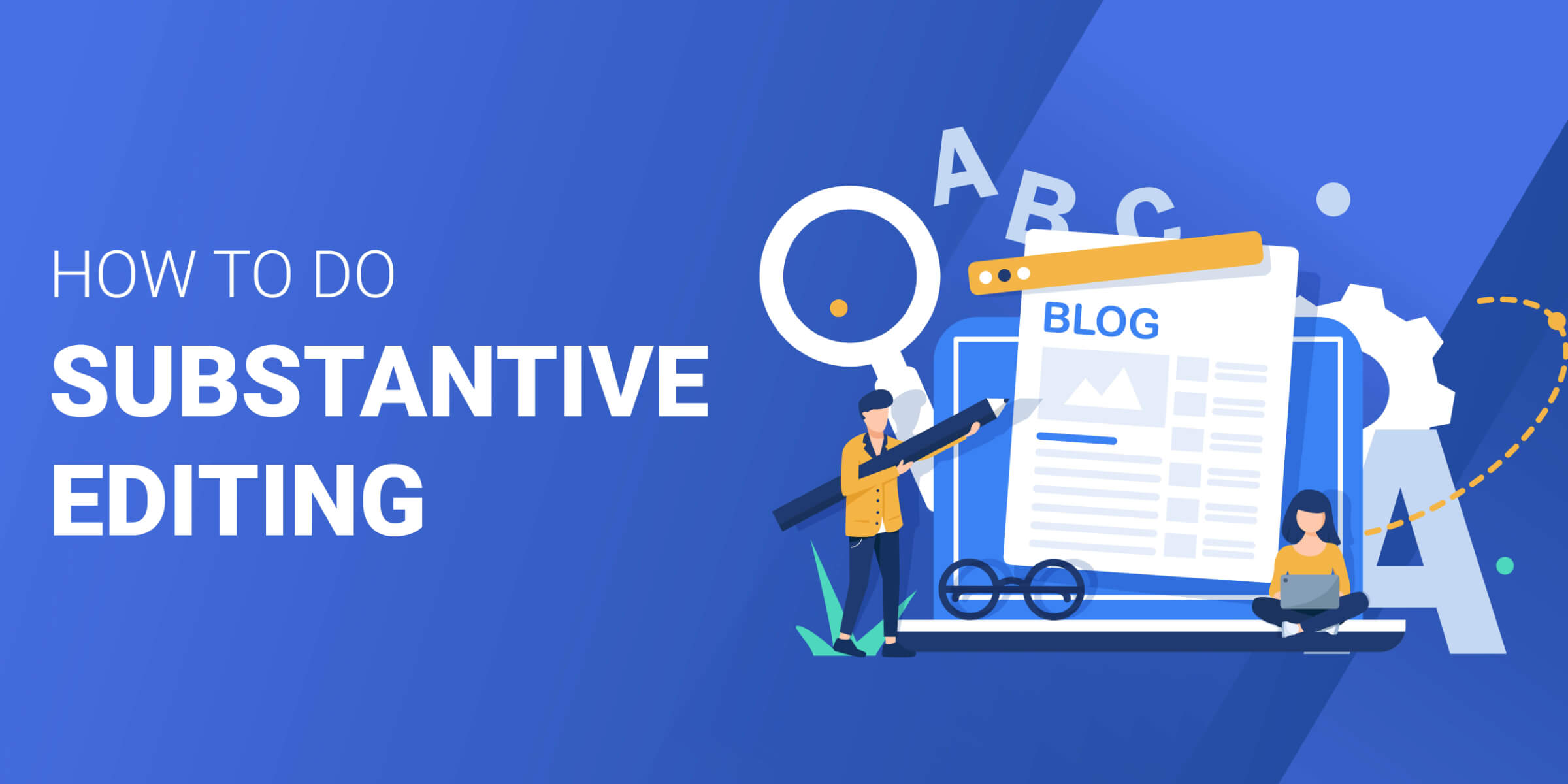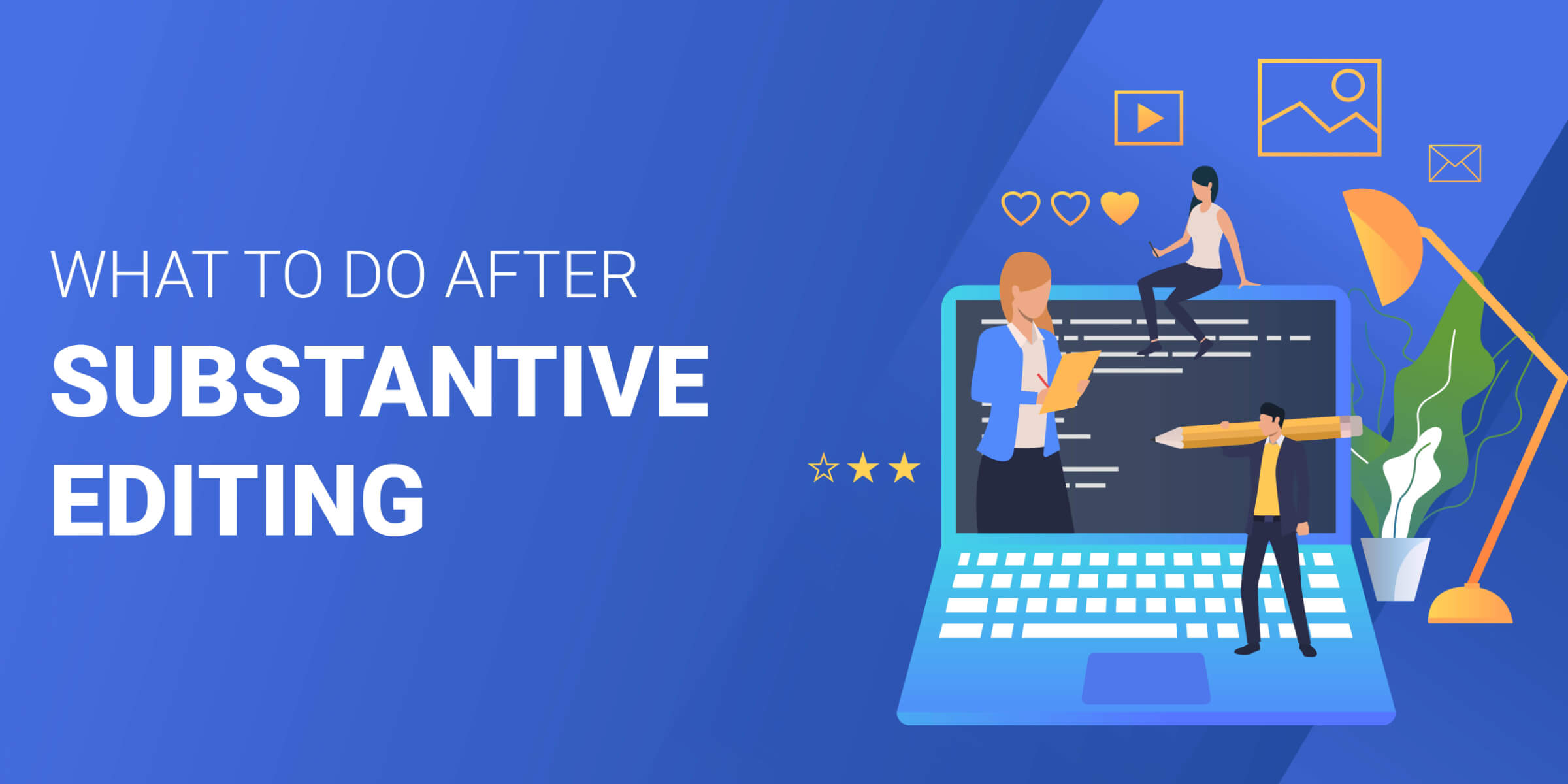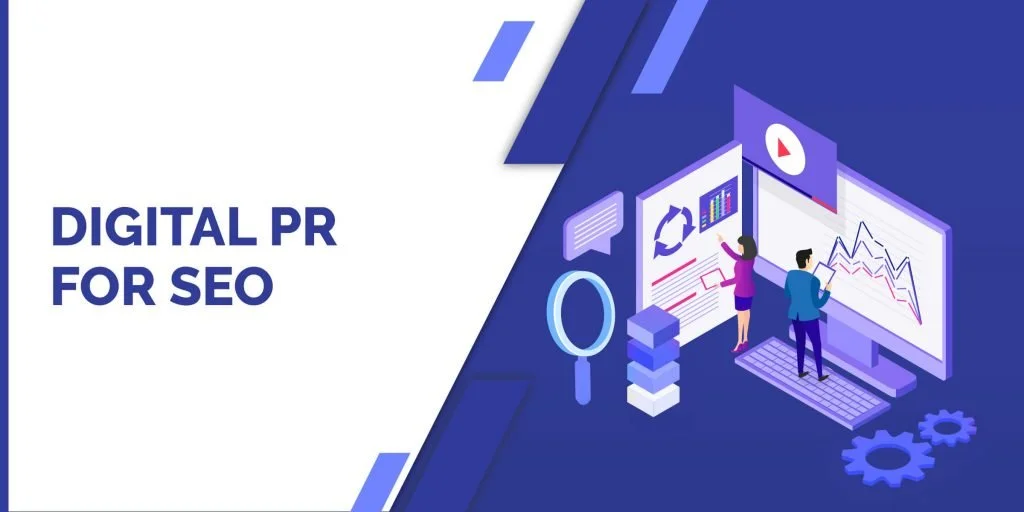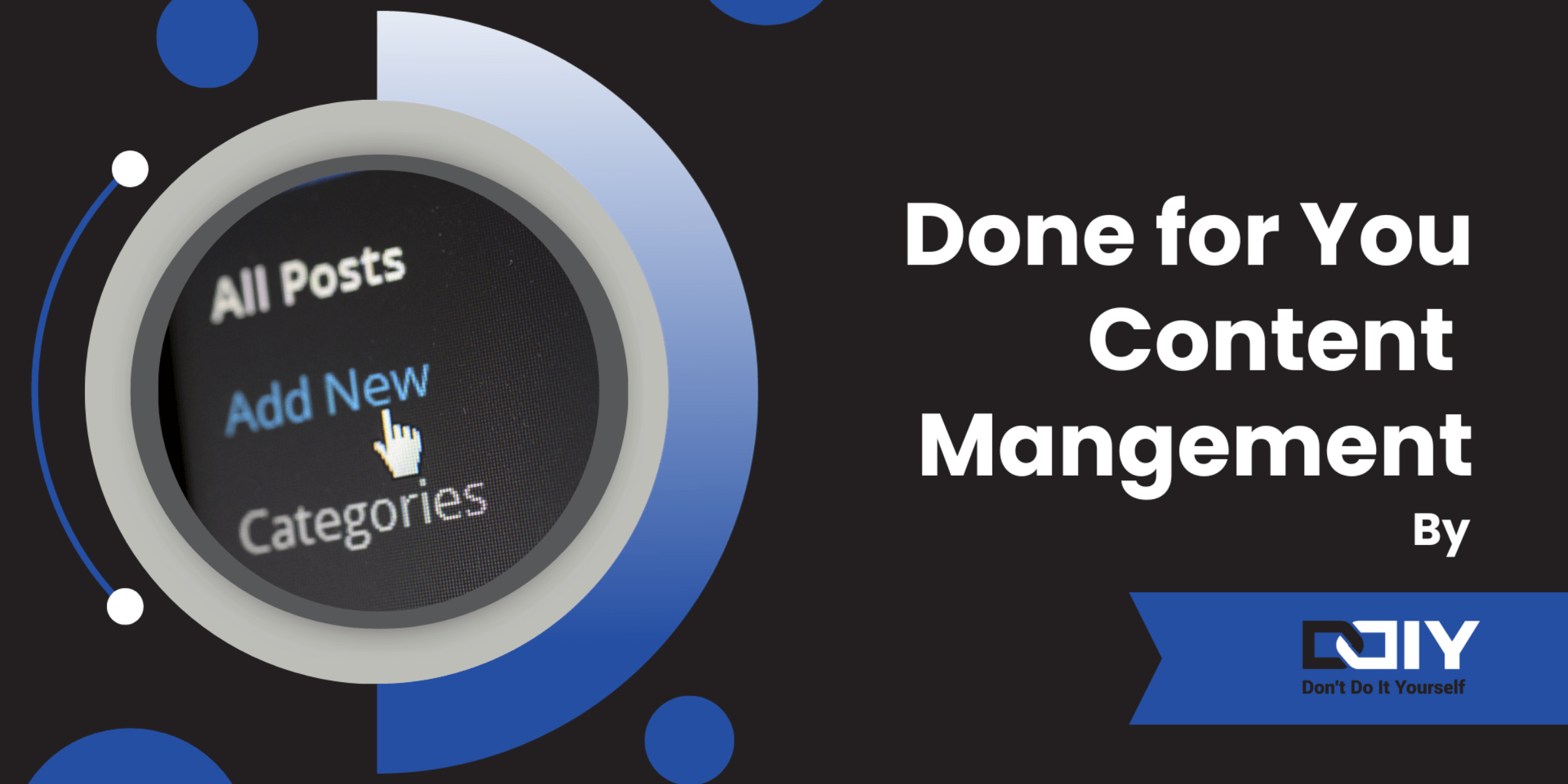Now that you’re done with your developmental edit, it’s time to smooth out those rough edges in your substantive edit.
As an editor and writer, I know how overwhelming the process can be, so I’m here to walk you through each step.
Let’s dive in to learn what you need to know about substantive editing.
Table of Contents
What Is Substantive Editing?


Often, folks use developmental and substantive editing interchangeably. If you’re editing articles, condensing the two makes sense. After rearranging an article to improve the structure, you need to smooth out the transitions between paragraphs and sections (this is your substantive edit for article writing). Even I smooth things out as I move sections and paragraphs around.
However, when self-editing novels, I don’t think that it’s wise because developmental and substantive edits are looking at two different things. When you go to hire an editor, it’s nice that things are packaged together because that’s less money you have to shell out.
To give you a bit of perspective during self-editing, developmental looks at the overall structure of a novel in terms of plot and character development. You want to make sure that the major beats of your novel are 1) actually there or 2) need to be added.
Substantive takes a narrower look at the scenes. Your scenes serve the overall structure, but unless that structure is in place first, you can really determine what role your scenes should be playing.
Each scene should be like a mini-chapter, with the character losing or gaining something on their overall journey. It should serve to propel the plot as well as the character forward. Scenes should not leave your characters stagnant in terms of growth and plot.
In this round of editing, you’re going to cut scenes that don’t serve the overall purpose of your novel and strengthen scenes that need to be there but just aren’t memorable enough for readers.
How Long Does Substantive Editing Take?
Depending on the novel's complexity and how much work your scenes need, it can take about a month to complete.
What Kind of Writing Needs Substantive Editing?
Once you’ve gotten your overall structure completed through a developmental edit, your novel is ready for a substantive edit.
The same is true for articles. The only difference is that during a substantive edit of an article, you’re looking at transitions between paragraphs and sections to help with the article’s flow.
What Are the Roles of an Editor for Substantive Editing?


While you need to go through this step yourself during your self-editing stage, the benefit of hiring a substantive editor is that you have an industry professional guiding you.
A substantive editor will have the experience and insights into the publication industry needed to make your novel a compelling read.
How Much Does Substantive Editing Cost?


According to Reedsy, an 80,000-word novel will run about $2,272. Naturally, this price varies depending on genre, novel length, and the editor’s experience.
How To Hire for Substantive Editing


What Qualities To Look For
Here are a few qualities you want to look for when hiring a substantive editor.
- Strong editing skills. Naturally, you’ll want to look for an editor with a proven track record of successful editing work and experience working on manuscripts in your genre or subject area. These editing skills include having a critical eye for structural- and scene-level edits.
- Communication skills. Your editor should be able to clearly and tactfully communicate their ideas and suggestions and be open to answering questions and addressing concerns.
- Professionalism. A substantive editor should have a good understanding of the publishing industry, including current trends and standards, and be able to advise you on how to make your manuscript more marketable. Additionally, the editor should be reliable, punctual, and able to work within deadlines while also maintaining a professional and respectful attitude toward you and your work.
Potential Interview Questions To Ask
To get you started with interviewing, here are a few questions you can think about asking.
- Can you describe your experience as a developmental editor?
- What is your approach to working with authors during the developmental editing process?
- How do you balance preserving an author’s voice while still making significant revisions to their work?
- Can you walk me through your process for assessing the overall structure and pacing of a manuscript?
- How do you provide constructive feedback to authors without discouraging them or damaging their confidence?
- How do you work with authors who are resistant to making significant changes to their work?
- Can you give an example of a challenging manuscript you worked on and how you helped the author address the issues?
- How do you ensure that the author’s intended audience is considered during the developmental editing process?
- Can you discuss your experience working with different genres or types of writing, such as fiction, memoir, or academic writing?
- How do you stay current with trends and developments in the publishing industry and incorporate this knowledge into your editing work?
Substantive Editing Education, Certifications, and Associations
There are tons of editing certifications and degrees out there. Most editors will be either journalism or English majors.
Editorial associations are a great way to find potential editors. You also know if an editor belongs to one of those associations, they take pride in their work and stay on top of continuing education in the editing industry.
Here are some associations to check out:
- ACES: The Society of Editing
- Editorial Freelance Association
- National Association of Independent Writers and Editors
- PEN: Professional Editors Network
Best Substantive Editing Services
Best for Basic Editing & Proofreading
Panda Copy and EditorNinja
Both Panda Copy [Review] and EditorNinja [Review] are editing services that you can hire for several types of editing (copyediting, developmental and substantive edits). They are an editing firm with teams of editors that work on everything from articles to even longer texts like novels.
You do not get to pick which editor works on your project. They are assigned or pick your project if it the editor believes they will be a good fit. You are, however, saved from having to go through the entire hiring process since both services handle this part for you.
Their services are really on point. My only caution is to make sure the cost works for your budget.
Reedsy
Reedsy is a great place to find freelance editors specializing in novel-length texts. It is more like Fiverr in the sense that editors offer their services and testimonials rather than being assigned a project.
Unlike EditorNinja or Panda Copy, you must research, interview, and hire your editor. None of the professionals on Reedsy actually work for the company.
The editors undergo a pretty rigorous screening process to be eligible for Reedsy Marketplace. In fact, most editors come from major publishing houses or small press publishers.
You can find a professional for just about any service you need to publish a book on the site. We’re talking everyone from editors to book cover artists on Reedsy Marketplace.
It’s a great resource to have in your back pocket.
How To Prepare for Substantive Editing


Without the developmental issues taken care of, you’re going to have to pull double duty by fixing the structural issues and then coming back to substantive. Believe me. It’s not fun.
To help make sure that you’re ready for substantive, send your novel off to beta readers to get a sense of whether those developmental areas are working well. If they are, you can drill into the scenes. If not, you can save yourself time by addressing the issues sooner, ultimately giving you a much firmer foundation to build your substantive edits on.
How To Do Substantive Editing


- Create scene cards. Just like how people create their outlines using index cards, you can do a reverse outline right before you do your substantive edit. The trick is to let your novel sit for several days, at the very least. You will then create a list of the scenes that you remember. I usually include a short sentence about what happens in the scene and who the scene’s main character is if I’m working with multiple POVs.
- Scene list. Once you have the scenes you remember on their cards, it’s time to get a list of the scenes in your novel. You can, of course, do this by hand. But Scrivener, my go-to word processor for novels, can create a list of scenes for me. I name each scene to help me keep track of what they are (like a shorter version of the summarizing sentence on the card).
- Compare the cards and list. It’s time to compare the cards and the list. Any scenes that I don’t remember are going to be what I focus on. I need to determine if these scenes are extraneous or vital to the story. Extraneous scenes will be cut, but those that are actually vital need to be reworked.
What To Do After Substantive Editing


To move into line editing effectively, you need to once again let your novel rest. Taking time away from your novel will give you a fresh perspective on your work and help you catch line editing issues.
FAQs
Is substantive editing worth it?
Absolutely! It helps ensure your scenes support your plot, character arcs, and themes.
Is substantive editing useful for AI-generated content?
Yes, substantive editing improves AI-generated content by making sure that each section and paragraph flows smoothly into the next.
Who should use substantive editing?
Anyone who has had to rearrange their novel or article should complete a substantive edit.
What software do editors for substantive editing use?
There isn’t a specific software that will help with substantive edits, but you can leverage functionality in your word processor to make this editing stage easier.





















